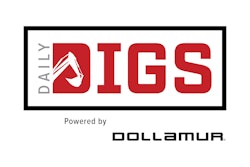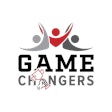A group of more than 250 doctors, researchers and officials has called on hockey organizations - from youth groups on up to the NHL - to ban hits to the head. Representatives from the United States, Canada and Europe attending the two-day "Ice Hockey Summit: Action on Concussion" conference at the Mayo Clinic's Sports Medicine Center emerged from the Rochester, Minn., facility Wednesday with the recommendation. The proposed new rule would set a stiffer head-checking standard in the NHL and its minor leagues in an effort to reduce the 75 reported concussions that occur on average each season in the NHL. Because the league serves as an example for all hockey players, the change could be seen at all levels of the game.
The New York Times' Jeff Klein provided thorough coverage of the conference throughout the week. One of the most astonishing statistics he revealed was that 700 concussions are reported each year among the 9,000 11- and 12-year-olds playing youth hockey in Alberta, Canada.
The rule proposed by the Ice Summit contingent reads as follows:
A minor penalty shall automatically be assessed to any player who contacts the head of another player. A major penalty plus game misconduct or match penalty shall be assessed to any player who intentionally or recklessly contacts a player to the head.
It was approved in a vote by all conference attendees, Klein reports, and the NHL's chief neuropsychologist Ruben Echemendia, who was in attendance, said he would pass on the proposal to league leaders.
Conference attendees also strongly urged youth hockey officials to delay the age at which body checking is introduced to 13, two years later than the current age in the United States and some Canadian provinces. Carolyn Emery of the University of Calgary contrasted the concussion rate among 11- and 12-year-olds in Alberta, where body checking is allowed at that age, and Quebec, where it is not. In a study of an equal number of players, the Alberta players sustained four times as many concussions. According to The Times, Emery estimates that if Alberta changed the age to 13, 11- and 12-year-olds playing hockey there would sustain 300 concussions a year, rather than 700.
"Change is not going to happen overnight," Michael Stuart, chief medical officer for USA Hockey and the father of three sons who played in the NHL, told reporters at the summit. "At the same time, the clock is ticking. If we say we need additional long-term injury research to validate any recommendation, there will be a lot of athletes who will suffer in the interim.
The Mayo Clinic conference was the latest in a series aimed at preventing and treating concussions. Hockey trails only football in the number of reported concussions, including the one sustained by Buffalo Sabres winger Jason Pominville, who was hit from behind by Chicago Blackhawks defenseman Niklas Hjalmarsson on Oct. 11. (In a move similar to one the NFL made this week, the NHL suspended Hjalmarsson for two games, but as Yahoo! Sports' Nicholas Cotsonika reports, the suspension hasn't changed the way he plays the game. "I don't think you can skate around out there and be scared of getting suspended," Hjalmarsson told the columnist. "You've got to play your game.")
Among other statistics cited at the Ice Hockey Summit:• The concussion rate in NCAA women's ice hockey is 2.72 per 1,000 player hours. Compare that to NCAA men's ice hockey (1.47 per 1,000 player hours) and even NCAA football (2.34 per 1,000 player hours).• A third of all concussion-causing blows in hockey are to the face or jaw.• Sixty percent of concussions in the NHL come from checks delivered with the shoulder to the head.




































